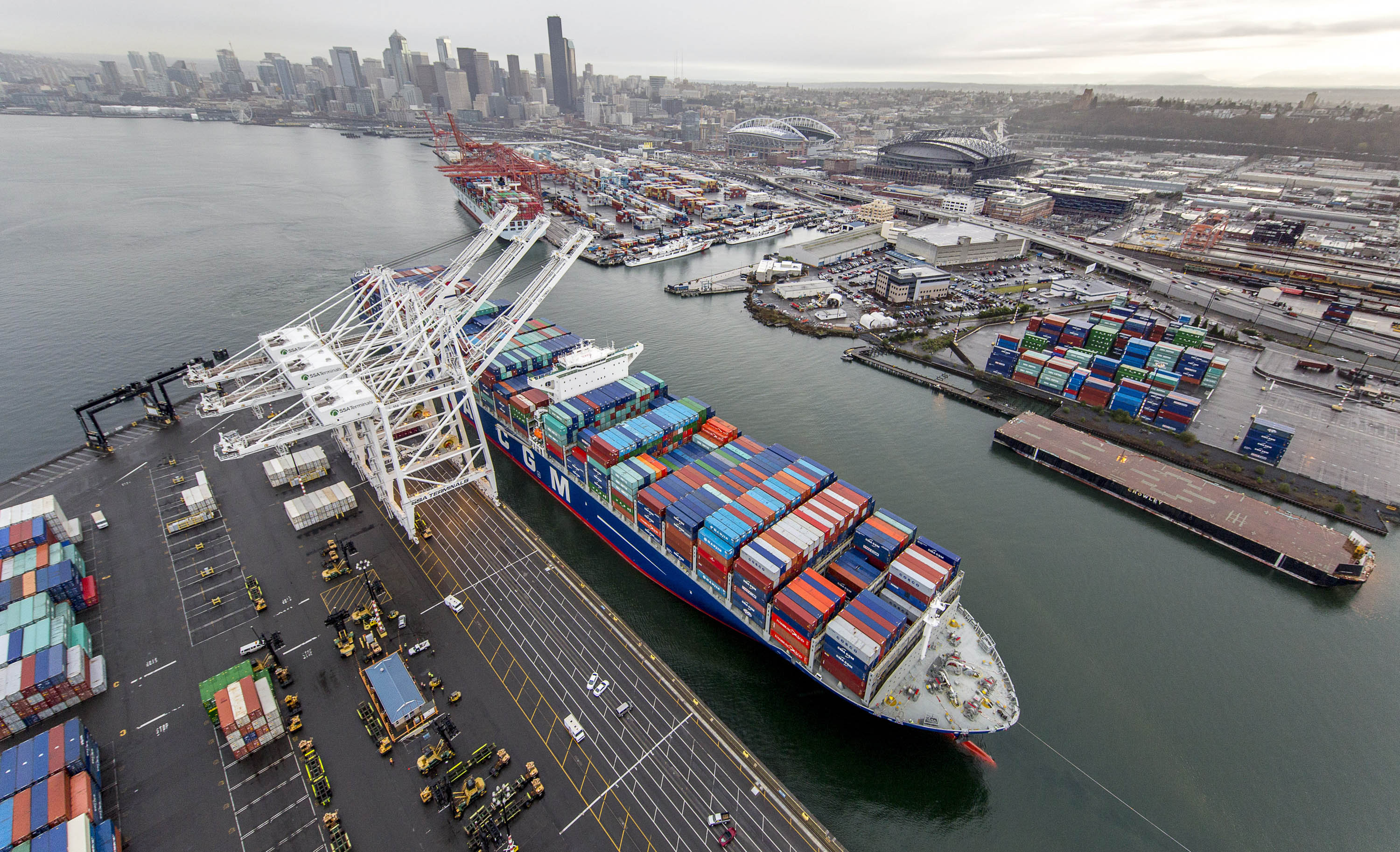1.
Feasibility
Study
2.
Chief's
Report
3.
Construction
Authorization
(WRDA)
4.
Construction
Appropriation
5.
Construction
Completion
| 57 feet | Proposed Depth |
| $29,362,000 | Federal |
| $31,880,000 | Non-Federal |
| $61,242,000 | Total |
| Senator Patty Murray (D-WA) |
| Senator Maria Cantwell (D-WA) |
| Rep. Pramila Jayapal (D-WA-07) |

The Seattle harbor is utilized by The Northwest Seaport Alliance (NWSA), a partnership of the ports of Seattle and Tacoma. The Port of Seattle handles over 26 million tons of cargo annually, consisting of containers, molasses, breakbulk and grain. The main source of revenue for the harbor is containerized cargo which can contain machinery, transport equipment, base metals, toys, apparel, furniture, oil seeds, fruit, vegetables, plastics/rubber and a variety of other commodities. The port is responsible for the creation of 58,400 jobs, over $4 billion in total compensation, and $12.4 billion in total business output, in addition to $136 million in tax revenue for the state of Washington.
The largest vessels calling at West Coast ports today have more than twice the capacity of those that served the port ten years ago. Ocean carriers are only calling at ports that can accommodate these larger vessels. To remain a competitive trade gateway for U.S. shippers and to preserve the many jobs related to maritime trade, Port of Seattle and the NWSA must take steps to better serve these larger vessels, including deepening the federal channels adjacent to the port’s container terminals. The port has lost cargo to the Canadian ports of Vancouver and Prince Rupert, which have no depth limitation. Thousands of jobs are at risk from continued cargo diversion to Canada. Channel deepening is a necessary step for reversing this trend. Allowing larger ships to enter the port is also key to reducing emissions because these larger, newer ships are cleaner and because fewer ships are required to move the same amount of cargo. The first phase of the project, which will deepen Seattle harbor’s West Waterway, is now in the design phase.
